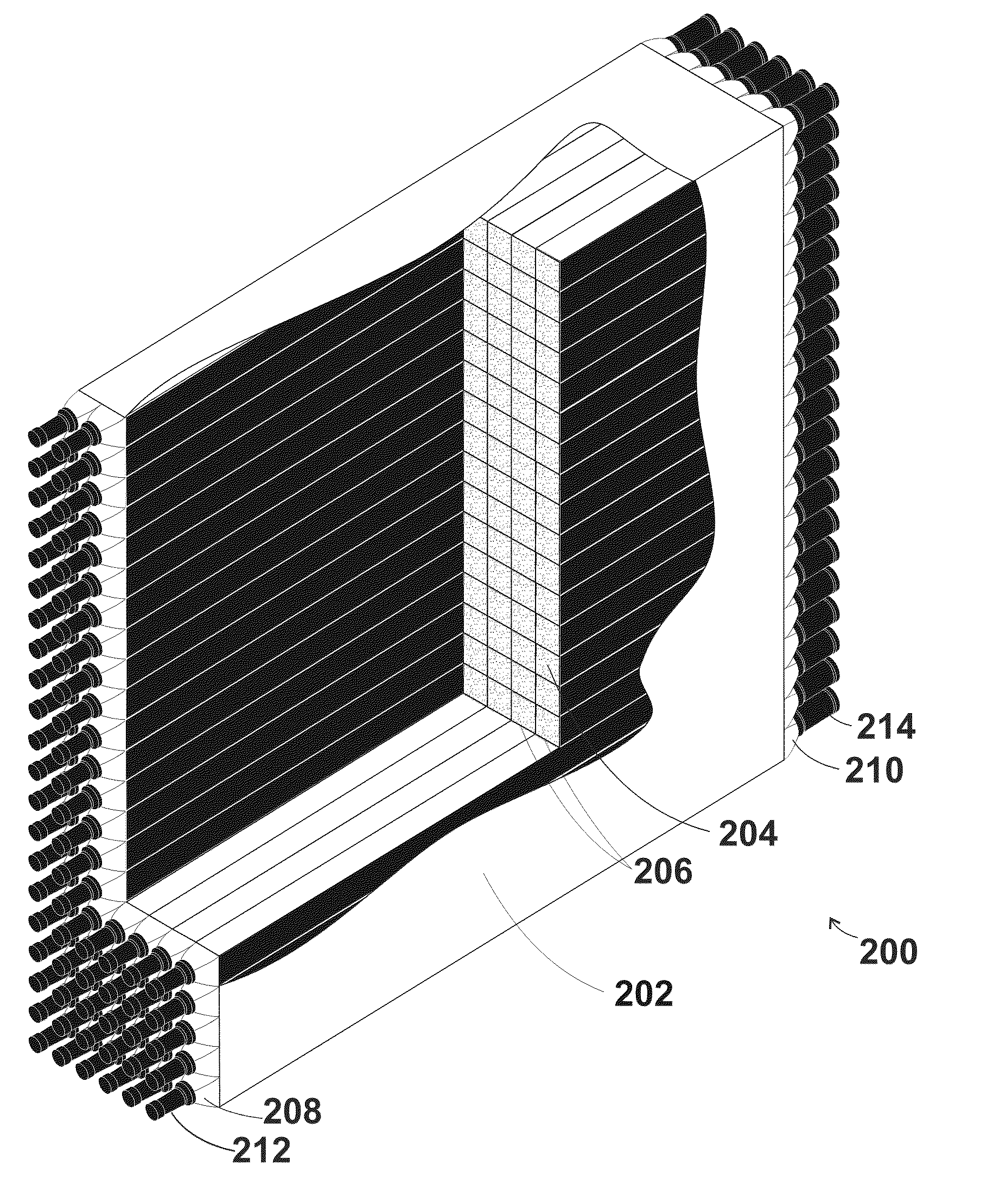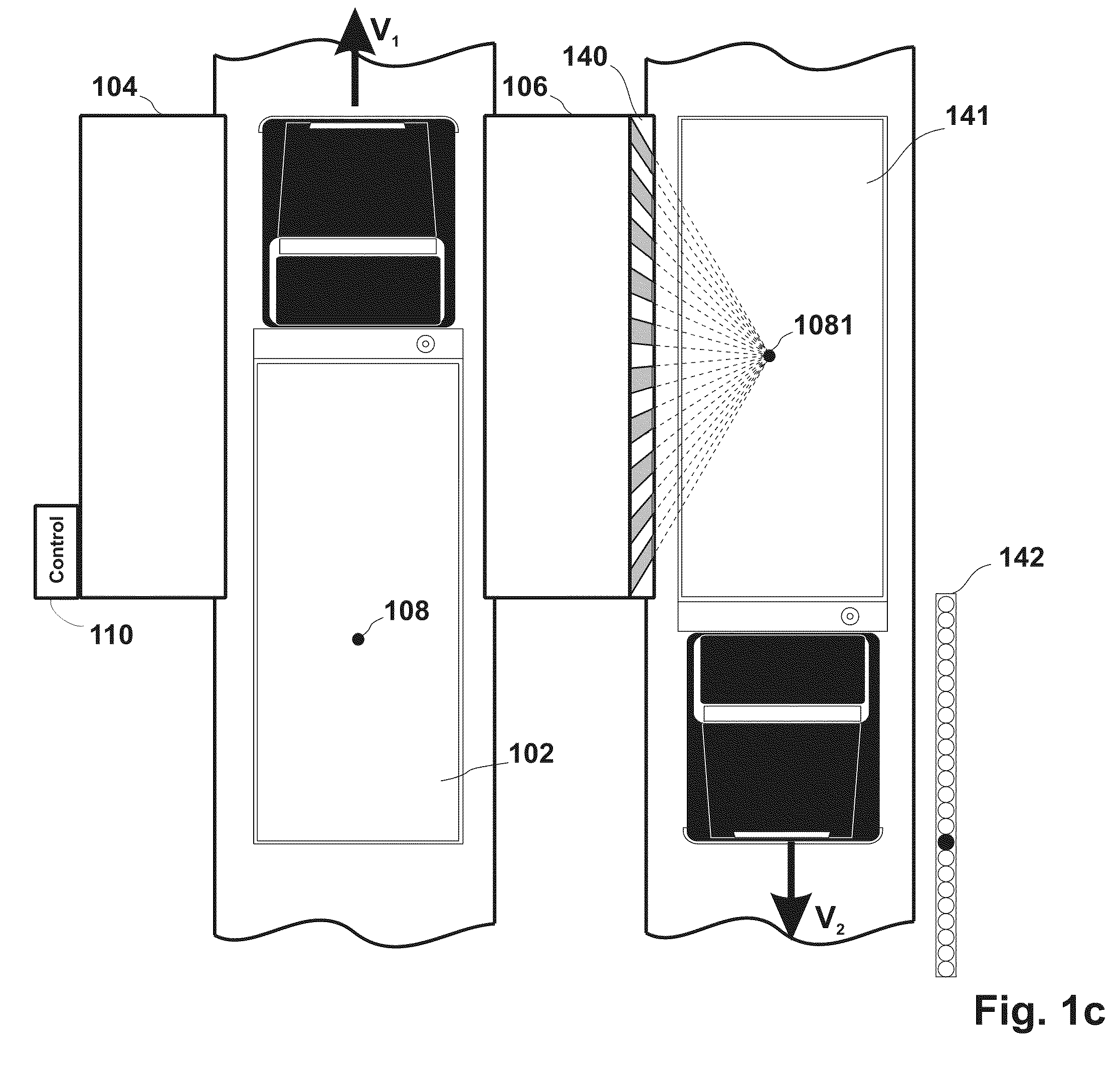Advanced SNM Detector
- Summary
- Abstract
- Description
- Claims
- Application Information
AI Technical Summary
Benefits of technology
Problems solved by technology
Method used
Image
Examples
Embodiment Construction
[0203]FIG. 1A shows a schematic drawing of a portion of a system 100 for detecting nuclear threats. As illustrated, vehicles 102, for example a screened object (e.g. a truck,) passes between two detectors 104, 106. In some embodiments only a single detector is used and in some, as described below, two or more such detectors are used. In a preferred embodiment of the invention, the detectors are of one of the types of detectors described below. The detectors are optionally high enough to cover the entire height of the truck or other objects being scanned. The length of the detector (in the direction of motion of the object) is not related to the height; however in some embodiments of the invention it is made 2, 3, 4, 6 or more meters long, so as to provide a desired detection sensitivity.
[0204]For illustration purposes, vehicle 102 is shown carrying a nuclear material 108.
[0205]A controller 110 receives signals from the detectors and based on these signals, and optionally on informat...
PUM
 Login to View More
Login to View More Abstract
Description
Claims
Application Information
 Login to View More
Login to View More - R&D
- Intellectual Property
- Life Sciences
- Materials
- Tech Scout
- Unparalleled Data Quality
- Higher Quality Content
- 60% Fewer Hallucinations
Browse by: Latest US Patents, China's latest patents, Technical Efficacy Thesaurus, Application Domain, Technology Topic, Popular Technical Reports.
© 2025 PatSnap. All rights reserved.Legal|Privacy policy|Modern Slavery Act Transparency Statement|Sitemap|About US| Contact US: help@patsnap.com



